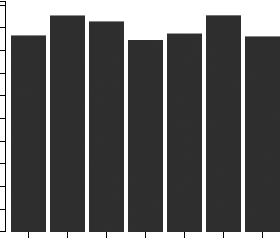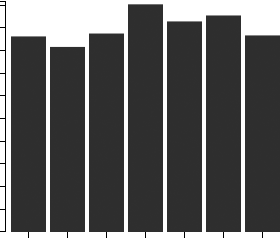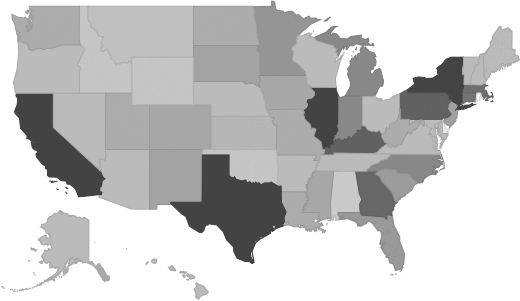Teleproduction and Other Postproduction Services - Market Size, Financial Statistics, Industry Trends
Industry Overview
This U.S. industry comprises establishments primarily engaged in providing specialized motion picture or video postproduction services, such as editing, film/tape transfers, subtitling, credits, closed captioning, and animation and special effects. Cross-References. Establishments primarily engaged in--Source: U.S. Census Bureau
Teleproduction and Other Postproduction Services Market Size
This report includes historical and forecasted market sizes and industry trends for Teleproduction and Other Postproduction Services. It reveals overall market dynamics from 2020 through the present, and predicts industry growth or shrinkage through 2030. Revenue data include both public and private companies in the Teleproduction and Other Postproduction Services industry.| Historical | Forecasted | ||||||||||
|---|---|---|---|---|---|---|---|---|---|---|---|
| 2020 | 2021 | 2022 | 2023 | 2024 | 2025 | 2026 | 2027 | 2028 | 2029 | 2030 | |
| Market Size (Total Revenue) | Included in Report |
||||||||||
| % Growth Rate | |||||||||||
| Number of Companies | |||||||||||
| Total Employees | |||||||||||
| Average Revenue per Company | |||||||||||
| Average Employees per Company | |||||||||||
Industry Revenue ($ Billions)

Industry Forecast ($ Billions)

Pell Research's advanced econometric models forecast five years of industry growth based on short- and long-term trend analysis. Market size statistics include revenue generated from all products and services sold within the Teleproduction and Other Postproduction Services industry.
Geographic Breakdown by U.S. State
Teleproduction and Other Postproduction Services market share by state pinpoints local opportunities based on regional revenue statistics. Growth rate for each state is affected by regional economic conditions. Data by state can be used to locate profitable and nonprofitable locations for Teleproduction and Other Postproduction Services companies in the United States.Industry Revenue by State [Sample]

Distribution by Company Size
| Company Size | All Industries | Teleproduction and Other Postproduction Services |
|---|---|---|
| Small Business (< 5 Employees) | Included |
|
| Small Business (5 - 20) | ||
| Midsized Business (20 - 100) | ||
| Large Business (100 - 500) | ||
| Enterprise (> 500) | ||
Industry Income Statement (Average Financial Metrics)
Financial statement analysis determines averages for the following industry forces:- Cost of goods sold
- Compensation of officers
- Salaries and wages
- Employee benefit programs
- Rent paid
- Advertising and marketing budgets
The report includes a traditional income statement from an "average" Teleproduction and Other Postproduction Services company (both public and private companies are included).
| Industry Average | Percent of Sales | |
|---|---|---|
| Total Revenue | Included |
|
| Operating Revenue | ||
| Cost of Goods Sold (COGS) | ||
| Gross Profit | ||
| Operating Expenses | ||
| Operating Income | ||
| Non-Operating Income | ||
| Earnings Before Interest and Taxes (EBIT) | ||
| Interest Expense | ||
| Earnings Before Taxes | ||
| Income Tax | ||
| Net Profit | ||
Average Income Statement

Cost of Goods Sold
Salaries, Wages, and Benefits
Rent
Advertising
Depreciation and Amortization
Officer Compensation
Net Income
Financial Ratio Analysis
Financial ratios allow a company's performance to be compared against that of its peers.| Financial Ratio | Industry Average |
|---|---|
| Profitability Ratios | Included |
| Profit Margin | |
| ROE | |
| ROA | |
| Liquidity Ratios | |
| Current Ratio | |
| Quick Ratio | |
| Activity Ratios | |
| Average Collection Period | |
| Asset Turnover Ratio | |
| Receivables Turnover Ratio | |
| Inventory Conversion Ratio |
Products and Services Mix
Product lines and services in the Teleproduction and Other Postproduction Services industry accounting for the largest revenue sources.| Product Description | Description | Revenue ($ Millions) |
|---|---|---|
| Industry total | Included |
|
| Nonlinear editing | ||
| Other postproduction services for audiovisual works | ||
| Linear editing | ||
| Postproduction services for av works - sound editing & design | ||
| Visual effects | ||
| Duplication & copying services for audiovisual works | ||
| Color correction services | ||
| Duplication of masters for audiovisual works | ||
| Digital restoration | ||
Compensation and Salary Surveys
Salary information for employees working in the Teleproduction and Other Postproduction Services industry.| Title | Percent of Workforce | Bottom Quartile | Average (Median) Salary | Upper Quartile |
|---|---|---|---|---|
| Management Occupations | 4% |
Included |
||
| Chief Executives | 0% | |||
| General and Operations Managers | 2% | |||
| Arts, Design, Entertainment, Sports, and Media Occupations | 39% | |||
| Art and Design Workers | 6% | |||
| Entertainers and Performers, Sports and Related Workers | 15% | |||
| Actors, Producers, and Directors | 14% | |||
| Producers and Directors | 10% | |||
| Media and Communication Equipment Workers | 14% | |||
| Television, Video, and Motion Picture Camera Operators and Editors | 7% | |||
| Film and Video Editors | 5% | |||
| Food Preparation and Serving Related Occupations | 12% | |||
| Food and Beverage Serving Workers | 10% | |||
| Fast Food and Counter Workers | 9% | |||
| Counter Attendants, Cafeteria, Food Concession, and Coffee Shop | 7% | |||
| Personal Care and Service Occupations | 16% | |||
| Entertainment Attendants and Related Workers | 13% | |||
| Ushers, Lobby Attendants, and Ticket Takers | 11% | |||
| Ushers, Lobby Attendants, and Ticket Takers | 11% | |||
| Sales and Related Occupations | 6% | |||
| Office and Administrative Support Occupations | 9% | |||
Government Contracts
The federal government spent an annual total of $3,740,063 on the Teleproduction and Other Postproduction Services industry. It has awarded 118 contracts to 37 companies, with an average value of $101,083 per company.Top Companies in Teleproduction and Other Postproduction Services and Adjacent Industries
| Company | Address | Revenue ($ Millions) |
|---|---|---|
Included |
||
